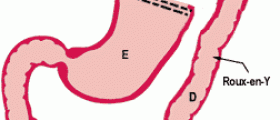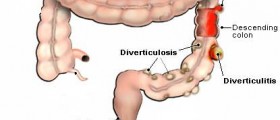
Definition and cause:
Rectal prolapse is a condition in which the rectum falls out from its normal position as a result of the weakening of the tissue that surrounds the anus. The "prolapse" itself is a situation when some of the organs in human body "fall out" from its original position as a result of weakening of the supporting tissue (for instance, muscles). It can be triggered by various reasons. Rectal prolapse occurs as a result of age, constipation, increased physical activity, heavy lifting, anal sex, and repeated childbirth. Rectal prolapse may be complete (when complete rectum falls out of human body), or occult (when rectum does not leave the anus).
Demographics:
Rectal prolapse affects about 4 per every 1000 people in US, but this number goes up to 10 for elderly people (>65 years of age). The vast majority of patients are women with the 1 to 5 ratio.
Treatment:
If the prolapse is beginning to interfere in one's daily life and activities, a possible solution may be surgery. Surgery can be abdominal or perineal, depending on a reason that led to the rectal prolapse. Abdominal surgery is indicated when patient is younger and more tolerable toward complicated surgeries and longer recovery time and the results of that approach are longer lasting. Perineal surgery is predominantly done for older patients because of an increased risk of complications while performing abdominal surgery.
Abdominal and laparoscopic approach:
Abdominal procedure is done under general anaesthesia. The goal of this approach is lifting the rectum and stitching it to the sacrum (lower backbone) and also removal of the s-shaped sigmoid colon (last part of the colon, just before the rectum) so the faeces can easily leave the patient's body. For this approach, it is necessary to make one large incision.
Laparoscopic procedure is done through several smaller incisions and using laparoscope (flexible tube with camera attached at the end of it). While watching the session on a monitor, the surgeon uses other incisions to operate using the same instruments as in a non-laparoscopic procedure. This procedure is safer and it shortens the recovery.
Perineal approach can be done under general or regional anaesthesia, depending on several factors. This procedure is performed through the anus. There are two most frequently used approaches (Altemeier and Delorme procedures) and both of them have a similar goal; to resect, shorten and after that, restitch. There is one alternative procedure, called anal encirclement, and it is done by inserting thin circular band into the patient's rectum. This procedure is performed when patients are exposed to higher risks of complications during the surgery.
Diagnosis:
The most common way to diagnose rectal prolapse is a physical exam.
Postoperative care:
The patient remains on a liquid diet until the return of normal bowel function and is asked to avoid physical activities for a several weeks.

















Your thoughts on this
Loading...